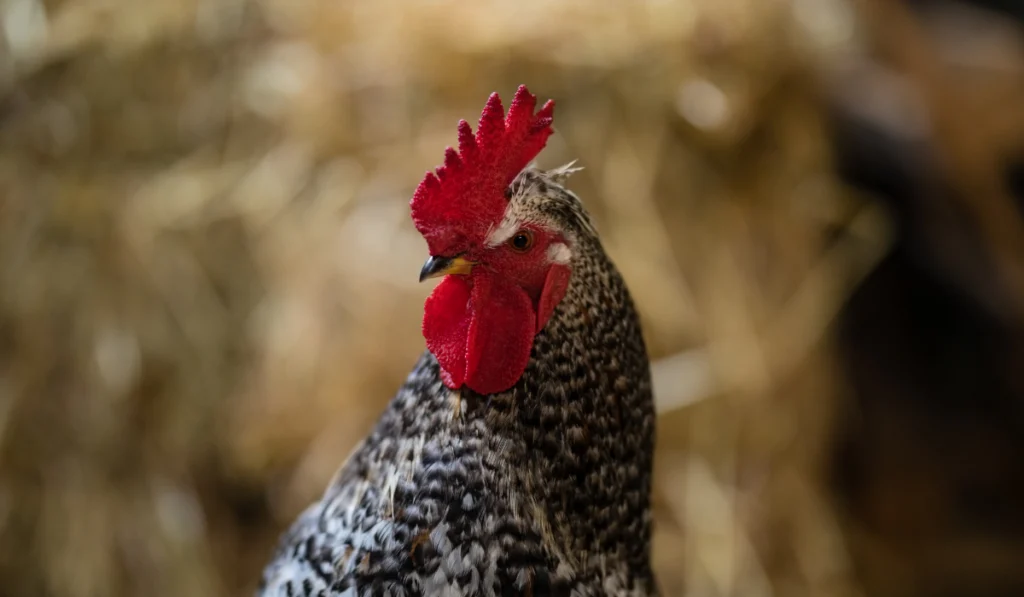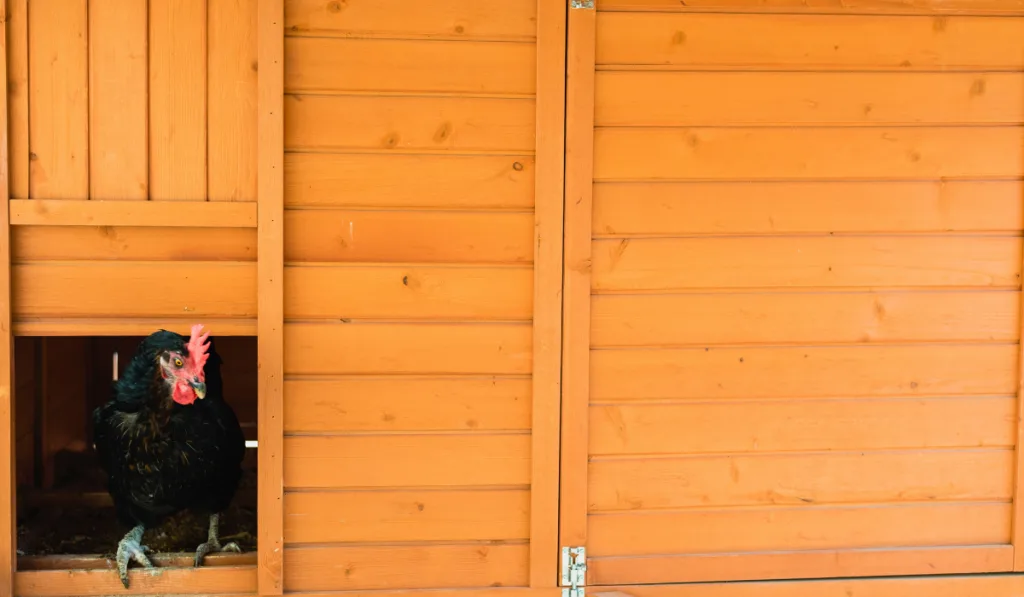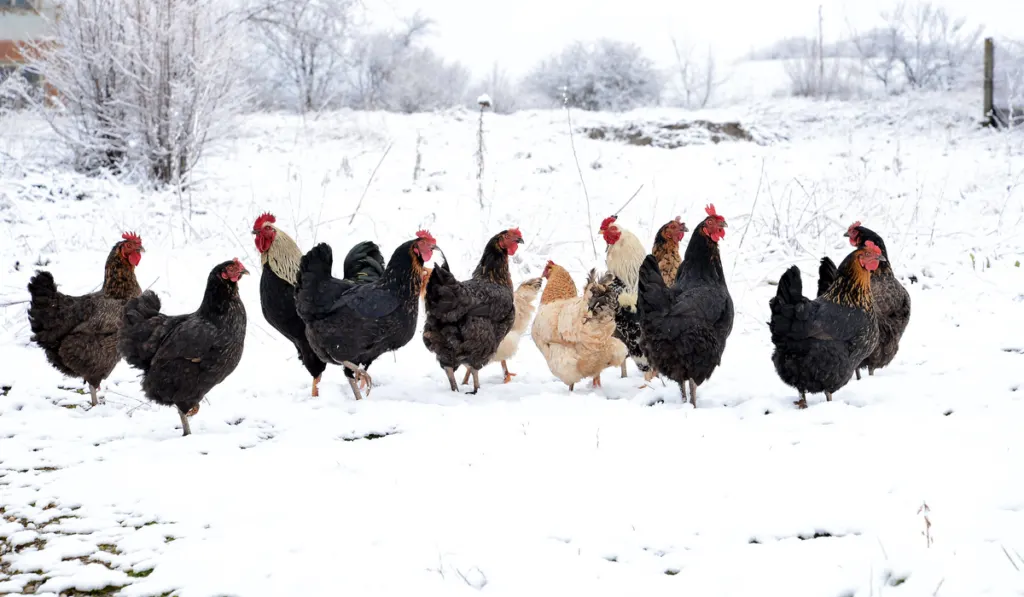How do you know if your chickens have frostbite in their feet? While chickens and other birds can withstand fairly cold temperatures, sometimes it gets too cold for even them.
To keep your animals well-protected, you need to know how to spot early warning signs of frostbite, and, even better, how to prevent frostbite from happening in the first place.

Every chicken owner wants their birds to have a good life and be healthy. Thriving chickens are fun to be around, they look good, and they lay eggs.
Keeping your chickens warm enough to withstand cold temperatures in the winter months is a big part of an effective care plan that will keep them happy.
If you live somewhere with snow or where temperatures drop low in the night, then you should be considered about frostbite and give your chickens a check every once in a while.
Prevention will go a long way in avoiding any frostbite in chickens, but you should know how to identify and treat cases of frostbite in case it happens to one of your birds. Here are some tips on how you can prevent and treat frostbite in chickens.
Table of Contents
Preventing Frostbite Is Easier than Treating Frostbite!
Prevention is the way to go. Spare your chickens long-term exposure to too cold temperatures if at all possible. Luckily, preventing frostbite in chickens is pretty easy.
All you have to do is put in some work and they’ll do the rest. The chickens don’t want to be left in the cold any more than you would, so as long as you set the right conditions, they’ll do what’s in their best interests.
1. Understand What Frostbite Is and How to Spot It
Frostbite happens with the skin and underlying tissues freeze. Mild cases can be treated relatively simply, but long exposure to severe cold can lead to serious frostbite that can require the amputation of toes, a foot, or other appendages.
In chickens, frostbite most commonly occurs in the wattles and combs. Roosters often suffer from frostbite more easily because their wattles and combs are larger than those of hens.
As a result, it’s harder for them to tuck their heads under their wings to stay warm while they sleep.
Generally, frostbite in chickens can be identified by grey, black, or white spots or areas in their feet. They can also start to show swelling, become red and irritated, and even develop blisters.
2. Know Which Breeds are Resistant to Colder Weather
If you’re thinking about buying new chickens and you live in a cold climate, the type of hens or roosters you buy should play into your decision.
Some chickens can withstand colder temperatures than others. For example, Ameraucanas, New Hampshire, Dominiques, and other chickens can thrive in colder weather.
Also, chickens with feathered feet like Faverolles and Marans are another great choice.
3. Feed Your Chickens Outside
Place any chicken feed and water outside of the pen. Moisture from water and food can contribute to humidity inside the pen which can make things colder inside. That means temps will dive even lower at night and could trigger frostbite.
4. Ensure Proper Ventilation Inside the Pen
Going along with the moisture theme, make sure your coop has proper ventilation so the air is circulating out. The moisture from the chickens’ breathing can hang heavily in the air, and if there is nowhere from droplets to escape, it’s going to feel frigid inside.
Create ventilation either through a cage door or slats on the upper levels of your pen to let humid air out of the pen.

5. Keep Their Bedding Dry
Chickens are dragging wet snow, water from the water area, and they are using the bathroom inside their pen. These all wet the bedding and keep things cold and humid in the coop.
Especially in the winter, make sure you’re switching out the bedding when it gets wet to stop it from making things even colder for your birds.
6. Make Your Pen Big Enough
When birds sleep, they should be covering their whole feet with their feathers to stay warm. If your coop is too small, the chickens won’t have enough room to spread out properly.
This can leave part or all of their feet from being exposed to cold temperature overnight, and that could lead to frostbite.
Don’t put more chickens in a coop than you should. If you are going to add to your chicken family, ensure that there is enough room to accommodate them in the existing coop or build a new space for them to sleep comfortably.
7. Watch Out for Wind Direction
Pay attention to the wind and where it’s blowing. You don’t want to have your chickens sleeping in the way of a constant whoosh of cold air. Position your coop and its walls in a way that will block the wind and keep your chickens warmer.
Effective Treatment of Frostbite in Chickens
Even if you think you’ve done everything possible to prevent your chickens from getting too cold, frostbite can happen. They do, after all, have minds of their own.
Sometimes chickens just find a way to get frostbite. If that happens, we are sorry, but knowing what to do if you spot signs of frostbite will help you treat them effectively and make them feel better. Here are some things you can do.
1. Gently Warm Them Up
When we see an animal in pain or suffering, our first instinct is to act quickly. It’s a perfectly natural response, but treating frostbite, whether in birds or humans, requires patience. Rapid thawing of frozen tissues can be very damaging as well.
Get your chicken out of the cold and into a warmer area as quickly as possible. Keep the injured chicken there for a few weeks while thawing happens and they recover fully.
Avoid using heating pads, space heaters, or any other strong heat source. That will thaw them too quickly.
2. Soak Their Feet in Intervals
Do not put your chicken’s feet in hot water to soak them. Water should be lukewarm at first and then you can make it a bit hotter, like a warm shower.
Soak their feet for no more than 20 minutes at a time. If the frostbite is located in the wattles or comb, you can soak a wet towel in warm water and apply it gently.

3. Reintroduce Them to the Other Chickens Under Supervision
When your injured chicken has fully recovered, you need to be careful with how you reintroduce them to the flock. Sometimes thawing frostbite will reveal irritation on the feet, and the other chickens will start pecking at the feet and could harm your chicken.
If you see that they are bothering your chicken a lot, then you should remove the chicken again and give it more time away from the flock.
4. Take Your Chicken to a Vet
Of course, in cases where there is severe frostbite or you find that what you’re trying just isn’t working, then you can take your injured chicken to the vet for some professional help.
A licensed veterinarian will know how to spot the symptoms and understand how severe a given case of frostbite is and assign an appropriate treatment regimen.
Caring for chickens is a lot of work! That goes doubly if you live somewhere that gets really cold at night or during the colder winter months.
Keep an eye out on your chickens’ feet to know if they’re getting too cold and frostbite is a risk. It’s always better to prevent frostbite and spot early warning signs than to see your birds suffer from long-term cold exposure.
